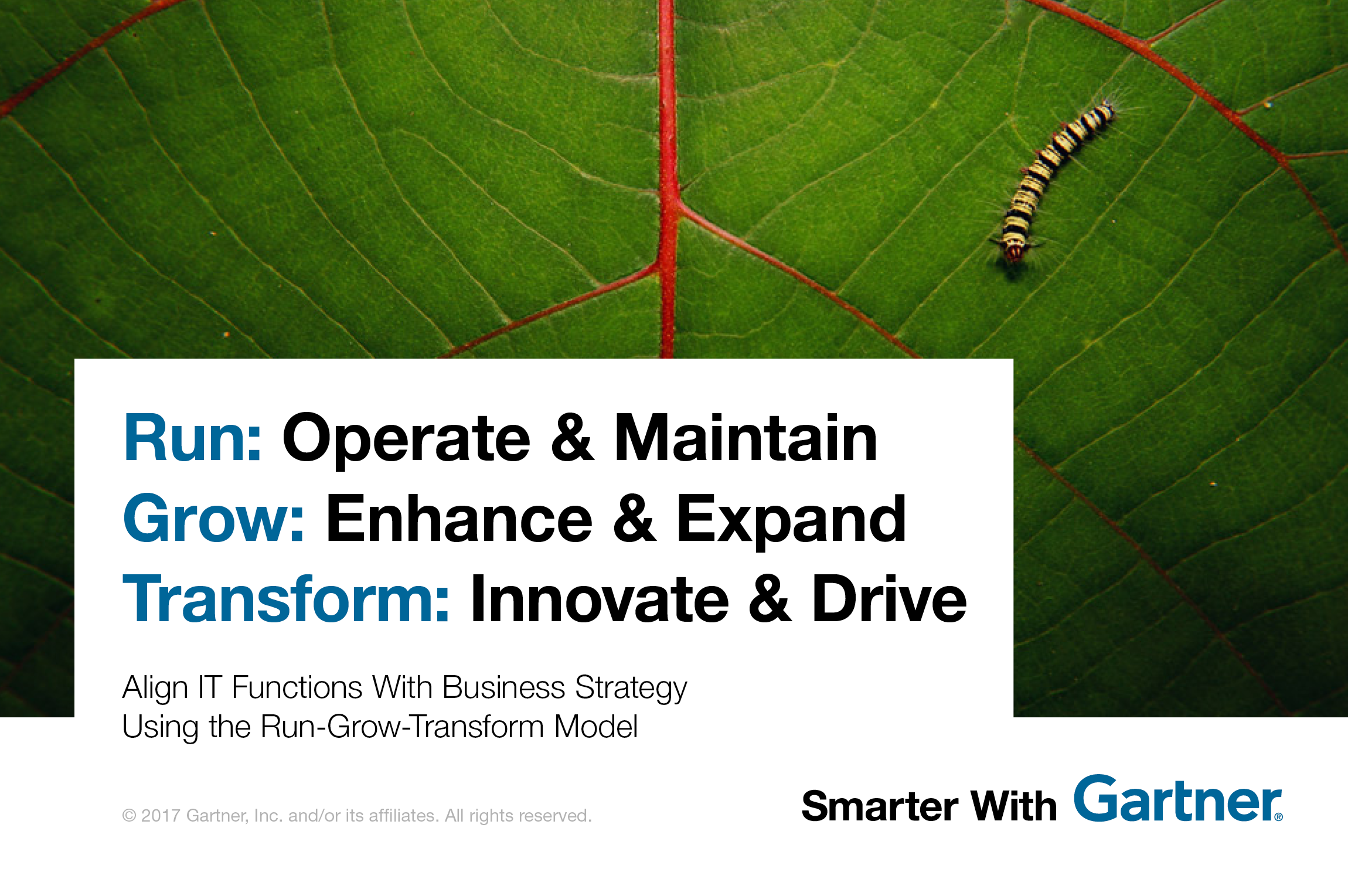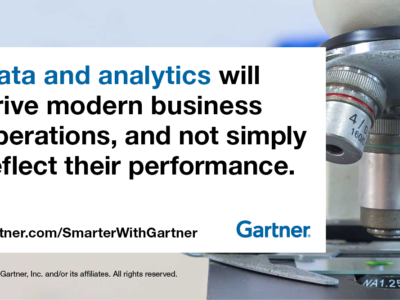Why CIOs must focus on activities that grow and transform the IT organization
New digital initiatives present CIOs with a difficult dilemma. They must now shift attention from simply managing business-as-usual operations — also known as “run costs” — to pursuing “grow” and “transform” activities as a priority.
For example, company A wants to expand into new digital markets, and as a result, has shifted the business strategy from maintaining sales to aggressively targeting new customers. Because the main priority of the company’s existing IT setup was to maintain the stability of the operational environment, it was not positioned to deliver on the changing business objectives of the company.
“CIOs are under mounting pressure to address digital needs with “grow” and “transform” functions, as well as to renovate the operational environment with “run” functions. They also must still demonstrate how IT is meeting strategic business goals,” says Suzanne Adnams, research vice president at Gartner.
Market shifts and changing customer needs in a digital environment mean that companies must create short-term and more targeted strategic objectives. CIOs must be able to adapt their IT strategies to support these new objectives so that companies are not left behind in the new digital business environment.
To address digital demand, CIOs need to understand the business priorities and objectives of the company so that IT investments, operating models and operational plans are aligned to enterprise outcomes. This means determining how IT capabilities are expected to run, grow and transform the business in the new digital landscape.
The run-grow-transform (RGT) model
Gartner developed the RGT model to support IT portfolio planning and investment in IT products and services. It also helps CIOs make decisions on the resources and capabilities required to develop, manage and support those IT investments.
Run: Operate and maintain
The run part of the model indicates how much of the IT resource is focused on the everyday operation of the business. Companies call this “business as usual,” “keeping the lights on” or “sustaining IT” spending. Run expenses do not directly increase revenue or achieve new company goals, but they do maintain essential functions and deliver efficiency at the appropriate quality and price for performance.
As companies grow more dependent on IT, it is possible to distinguish core run operations from activities needed to grow or transform the business. These core run functions are typically associated with the continuing operation of the business and tend to be nondiscretionary or fixed expenses. Some of these essential IT activities include:
- Infrastructure and operations
- Security, regulatory and compliance
- Business support
- IT financial management
- Application maintenance
Grow: Enhance and expand
The grow part of the RGT model refers to how much of the IT resource is focused on developing and enhancing IT systems in support of business growth (typically organic growth or improvements in business processes). They extend existing capabilities, deliver differentiation and provide competitiveness.
Companies that want to expand their market, revenue or influence must expand their products or services. The overall business strategy is therefore focused on growth, not just maintaining existing operations. To support this business objective, CIOs must ensure that there are appropriate capabilities within IT to build on its operational foundation and enhance business opportunities for growth. This is typically reflected by increased discretionary spending for capital projects, upgrading new technologies and working with other stakeholders on improved solutions to business issues.
To provide these capabilities, CIOs can focus on developing these essential grow functions:
- Business process analysis
- PMO/project management
- Solution/application architecture
- Sourcing and procurement
Transform: Innovate and drive
The transform aspect of the RGT model shows how much of the IT resource is aimed at implementing IT systems that enable the enterprise to enter new markets, address new customer segments, create new value propositions and enact new business models. This is a high-risk, high-reward category.
As companies mature in the digital age, the expectations on IT from the enterprise will evolve significantly. Transformational companies are looking at IT to deliver innovation, create new sources of revenue, explore new markets, and develop new products and services. CIOs cannot meet these objectives by focusing only on operational or growth capabilities, but must work hand-in-hand with business leaders to ensure IT capabilities can support transformation activities.
The typical transform functions that are now needed in the IT organization include:
- Research and development
- Capital investment management
- Architecture review board
- Rapid solution pilots
- Business architecture
- Digital solutions development
-
CIOs can use this model to review how well current IT functions align with the overall business strategy of the enterprise. First, they must map IT resources across the run, grow and transform categories to provide a high-level view of current capacity, including areas of functional shortfalls or gaps. They can then address these gaps where the company’s expectations are not aligned with the capabilities and resources within the IT organization.

Gartner clients can read more in CIOs Can Use the Run-Grow-Transform Model to Align IT Functions and Roles to Strategic Business Priorities by Suzanne Adnams, et al.








